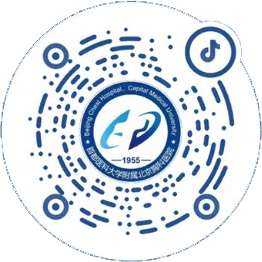2024年
No.6
PubMed
(tuberculosis[Title/Abstract]) OR (lung cancer[Title/Abstract])
Filters applied: from 2024/6/1 - 2024/6/30.
1. Nat Nanotechnol. 2024 Jun;19(6):834-845. doi: 10.1038/s41565-024-01618-0. Epub 2024 Feb 21.
Photothermal therapy of tuberculosis using targeting pre-activated macrophage membrane-coated nanoparticles.
Li B(#)(1)(2)(3), Wang W(#)(1), Zhao L(#)(3), Wu Y(#)(3), Li X(1), Yan D(4), Gao Q(3), Yan Y(5), Zhang J(6), Feng Y(1), Zheng J(1), Shu B(1), Wang J(1), Wang H(1), He L(1), Zhang Y(5), Pan M(5), Wang D(7), Tang BZ(8)(9), Liao Y(10)(11).
Author information:
(1)Molecular Diagnosis and Treatment Center for Infectious Diseases, Dermatology
Hospital of Southern Medical University, Guangzhou, China.
(2)School of Inspection, Ningxia Medical University, Yinchuan, China.
(3)Institute of Translational Medicine, Department of Clinical Laboratory &
Department of Burn Surgery, The First People's Hospital of Foshan, Foshan, China.
(4)Center for AIE Research, Shenzhen Key Laboratory of Polymer Science and Technology, Guangdong Research Center for Interfacial Engineering of Functional Materials, College of Materials Science and Engineering, Shenzhen University, Shenzhen, China.
(5)Department of Critical Care Medicine, Department of Emergency, Renmin Hospital of Wuhan University, Wuhan, China.
(#)Contributed equally
Conventional antibiotics used for treating tuberculosis (TB) suffer from drug resistance and multiple complications. Here we propose a lesion-pathogen dual-targeting strategy for the management of TB by coating Mycobacterium-stimulated macrophage membranes onto polymeric cores encapsulated with an aggregation-induced emission photothermal agent that is excitable with a 1,064 nm laser. The coated nanoparticles carry specific receptors for Mycobacterium tuberculosis, which enables them to target tuberculous granulomas and internal M. tuberculosis simultaneously. In a mouse model of TB, intravenously injected nanoparticles image individual granulomas in situ in the lungs via signal emission in the near-infrared region IIb, with an imaging resolution much higher than that of clinical computed tomography. With 1,064 nm laser irradiation from outside the thoracic cavity, the photothermal effect generated by these nanoparticles eradicates the targeted M. tuberculosis and alleviates pathological damage and excessive inflammation in the lungs, resulting in a better therapeutic efficacy compared with a combination of first-line antibiotics. This precise photothermal modality that uses dual-targeted imaging in the near-infrared region IIb demonstrates a theranostic strategy for TB management.
© 2024. The Author(s), under exclusive licence to Springer Nature Limited
DOI: 10.1038/s41565-024-01618-0
PMID: 38383890 [Indexed for MEDLINE]
2. Nat Microbiol. 2024 Jun;9(6):1513-1525. doi: 10.1038/s41564-024-01678-x. Epub 2024 Apr 24.
Age and sex influence antibody profiles associated with tuberculosis progression.
Davies LRL(#)(1)(2), Wang C(#)(3)(4), Steigler P(5)(6), Bowman KA(1)(2), Fischinger S(1), Hatherill M(5), Fisher M(5), Mbandi SK(5), Rodo M(5), Ottenhoff THM(7), Dockrell HM(8), Sutherland JS(8), Mayanja-Kizza H(9), Boom WH(10), Walzl G(11), Kaufmann SHE(12)(13)(14), Nemes E(5), Scriba TJ(5), Lauffenburger D(4), Alter G(15)(16), Fortune SM(17).
Author information:
(1)Ragon Institute of MGH, MIT, and Harvard, Cambridge, MA, USA.
(2)Brigham and Women's Hospital, Boston, MA, USA.
(3)Department of Immunology and Microbiology, University of Colorado Anschutz Medical Campus, Aurora, CO, USA.
(4)Biological Engineering, Massachusetts Institute of Technology, Cambridge, MA, USA.
(5)South African Tuberculosis Vaccine Initiative and Institute of Infectious Disease and Molecular Medicine, Division of Immunology, Department of Pathology, University of Cape Town, Cape Town, South Africa.
(6)Wellcome Centre for Infectious Diseases Research in Africa, Institute of Infectious Disease and Molecular Medicine and Division of Immunology, Department of Medicine, University of Cape Town, Cape Town, South Africa.
(#)Contributed equally
Antibody features vary with tuberculosis (TB) disease state. Whether clinical variables, such as age or sex, influence associations between Mycobacterium tuberculosis-specific antibody responses and disease state is not well explored. Here we profiled Mycobacterium tuberculosis-specific antibody responses in 140 TB-exposed South African individuals from the Adolescent Cohort Study. We identified distinct response features in individuals progressing to active TB from non-progressing, matched controls. A multivariate antibody score differentially associated with progression (SeroScore) identified progressors up to 2 years before TB diagnosis, earlier than that achieved with the RISK6 transcriptional signature of progression. We validated these antibody response
features in the Grand Challenges 6-74 cohort. Both the SeroScore and RISK6 correlated better with risk of TB progression in adolescents compared with adults, and in males compared with females. This suggests that age and sex are important, underappreciated modifiers of antibody responses associated with TB progression.
DOI: 10.1038/s41564-024-01678-x
PMCID: PMC11153143
PMID: 38658786 [Indexed for MEDLINE]
3. Ageing Res Rev. 2024 Jun;97:102315. doi: 10.1016/j.arr.2024.102315. Epub 2024 Apr 26.
Cellular senescence in lung cancer: Molecular mechanisms and therapeutic interventions.
Jha SK(1), De Rubis G(2), Devkota SR(3), Zhang Y(4), Adhikari R(5), Jha LA(6), Bhattacharya K(7), Mehndiratta S(2), Gupta G(8), Singh SK(9), Panth N(10), Dua K(11), Hansbro PM(12), Paudel KR(13).
Author information:
(1)Department of Biological Sciences and Bioengineering (BSBE), Indian Institute of Technology, Kanpur, Uttar Pradesh 208016, India.
(2)Discipline of Pharmacy, Graduate School of Health, University of Technology Sydney, Sydney, NSW 2007, Australia; Faculty of Health, Australian Research Centre in Complementary and Integrative Medicine, University of Technology Sydney, Ultimo, Australia.
(3)Monash Biomedicine Discovery Institute, and Department of Biochemistry and Molecular Biology, Monash University, Clayton, VIC 3800, Australia.
(4)School of Chemical Engineering, University of Adelaide, Adelaide 5005, Australia.
(5)College of Pharmacy and Natural Medicine Research Institute, Mokpo National
University, Jeonnam 58554, Republic of Korea.
Lung cancer stands as the primary contributor to cancer-related fatalities worldwide, affecting both genders. Two primary types exist where non-small cell lung cancer (NSCLC), accounts for 80-85% and SCLC accounts for 10-15% of cases. NSCLC subtypes include adenocarcinoma, squamous cell carcinoma, and large cell carcinoma. Smoking, second-hand smoke, radon gas, asbestos, and other pollutants, genetic predisposition, and COPD are lung cancer risk factors. On the other hand, stresses such as DNA damage, telomere shortening, and oncogene activation cause a prolonged cell cycle halt, known as senescence. Despite its initial role as a tumor-suppressing mechanism that slows cell growth, excessive or improper control of this process can cause age-related diseases, including cancer. Cellular senescence has two purposes in lung cancer. Researchers report that senescence slows tumor growth by constraining multiplication of impaired cells. However, senescent cells also demonstrate the pro-inflammatory senescence-associated secretory phenotype (SASP), which is widely reported to promote cancer. This review will look at the role of cellular senescence in lung cancer, describe its diagnostic markers, ask about current treatments to control it, look at case studies and clinical trials that show how senescence-targeting therapies can be used in lung cancer, and talk about problems currently being faced, and possible solutions for the same in the future.
DOI: 10.1016/j.arr.2024.102315
PMID: 38679394 [Indexed for MEDLINE]
4. Nat Commun. 2024 Jun 27;15(1):5467. doi: 10.1038/s41467-024-49246-5.
Mycobacterium tuberculosis strain with deletions in menT3 and menT4 is attenuated and confers protection in mice and guinea pigs.
Gosain TP(1), Chugh S(1), Rizvi ZA(2), Chauhan NK(1), Kidwai S(1), Thakur KG(3), Awasthi A(2), Singh R(4).
Author information:
(1)Centre for Tuberculosis Research, Translational Health Sciences and Technology Institute, NCR Biotech Science Cluster, 3rd Milestone, Faridabad-Gurugram Expressway, Faridabad, 121001, India.
(2)Centre for Immunobiology and Immunotherapy, Translational Health Sciences and Technology Institute, NCR Biotech Science Cluster, 3rd Milestone, Faridabad-Gurugram Expressway, Faridabad, 121001, India.
(3)Structural Biology Laboratory, Council of Scientific and Industrial Research-Institute of Microbial Technology (CSIR-IMTECH), Chandigarh, 160036, India.
(4)Centre for Tuberculosis Research, Translational Health Sciences and Technology Institute, NCR Biotech Science Cluster, 3rd Milestone, Faridabad-Gurugram Expressway, Faridabad, 121001, India. ramandeep@thsti.res.in.
The genome of Mycobacterium tuberculosis encodes for a large repertoire of toxin-antitoxin systems. In the present study, MenT3 and MenT4 toxins belonging to MenAT subfamily of TA systems have been functionally characterized. We demonstrate that ectopic expression of these toxins inhibits bacterial growth and this is rescued upon co-expression of their cognate antitoxins. Here, we show that simultaneous deletion of menT3 and menT4 results in enhanced susceptibility of M. tuberculosis upon exposure to oxidative stress and attenuated growth in guinea pigs and mice. We observed reduced expression of transcripts encoding for proteins that are essential or required for intracellular growth in mid-log phase cultures of ΔmenT4ΔT3 compared to parental strain. Further, the transcript levels of proteins involved in efficient bacterial clearance were increased in lung tissues of ΔmenT4ΔT3 infected mice relative to parental strain infected mice. We show that immunization of mice and guinea pigs with ΔmenT4ΔT3 confers significant protection against M. tuberculosis infection. Remarkably, immunization of mice with ΔmenT4ΔT3 results in increased antigen-specific TH1 bias and activated memory T cell response. We conclude that MenT3 and MenT4 are important for M. tuberculosis pathogenicity and strains lacking menT3 and menT4 have the potential to be explored further as vaccine candidates.
DOI: 10.1038/s41467-024-49246-5
PMCID: PMC11211403
PMID: 38937463 [Indexed for MEDLINE]
5. J Infect. 2024 Jun;88(6):106158. doi: 10.1016/j.jinf.2024.106158. Epub 2024 Apr 18.
Integrated single-cell transcriptome and T cell receptor profiling reveals defects of T cell exhaustion in pulmonary tuberculosis.
Wen Z(1), Wang L(2), Ma H(1), Li L(2), Wan L(2), Shi L(2), Li H(2), Chen H(2), Hao W(2), Song S(3), Xue Q(1), Wei Y(2), Li F(4), Xu J(1), Zhang S(2), Wong KW(5), Song Y(6).
Author information:
(1)Department of Scientific Research, Shanghai Public Health Clinical Center, Fudan University, Shanghai, China.
(2)Department of Thoracic Surgery, Shanghai Public Health Clinical Center, Fudan University, Shanghai, China.
(3)Department of Pathology, Shanghai Public Health Clinical Center, Fudan University, Shanghai, China.
(4)Department of Respiratory Diseases, Shanghai Public Health Clinical Center, Fudan University, Shanghai, China.
(5)Department of Scientific Research, Shanghai Public Health Clinical Center, Fudan University, Shanghai, China. Electronic address: kwwong@gmail.com.
Tuberculosis-affected lungs with chronic inflammation harbor abundant immunosuppressive immune cells but the nature of such inflammation is unclear. Dysfunction in T cell exhaustion, while implicated in chronic inflammatory diseases, remains unexplored in tuberculosis. Given that immunotherapy targeting exhaustion checkpoints exacerbates tuberculosis, we speculate that T cell exhaustion is dysfunctional in tuberculosis. Using integrated single-cell RNA sequencing and T cell receptor profiling we reported defects in exhaustion responses within inflamed tuberculosis-affected lungs. Tuberculosis lungs demonstrated significantly reduced levels of exhausted CD8+ T cells and exhibited diminished expression of exhaustion-related transcripts among clonally expanded CD4+ and CD8+ T cells. Additionally, clonal expansion of CD4+ and CD8+ T cells bearing T cell receptors specific for CMV was observed. Expanded CD8+ T cells expressed the cytolytic marker GZMK. Hence, inflamed tuberculosis-affected lungs displayed dysfunction in T cell exhaustion. Our findings likely hold implications for understanding the reactivation of tuberculosis observed in patients undergoing immunotherapy targeting the exhaustion checkpoint.
Copyright © 2024. Published by Elsevier Ltd.
DOI: 10.1016/j.jinf.2024.106158
PMID: 38642678 [Indexed for MEDLINE]
6. Lancet Glob Health. 2024 Jun;12(6):e995-e1004. doi: 10.1016/S2214-109X(24)00088-3.
Economic implications of novel regimens for tuberculosis treatment in three high-burden countries: a modelling analysis.
Ryckman TS(1), Schumacher SG(2), Lienhardt C(3), Sweeney S(4), Dowdy DW(5),
Mirzayev F(2), Kendall EA(6).
Author information:
(1)Division of Infectious Diseases, Department of Medicine, Johns Hopkins University School of Medicine, Baltimore, MD, USA. Electronic address: tryckma1@jh.edu.
(2)Global TB Programme, WHO, Geneva, Switzerland.
(3)Institut de Recherche pour le Développement, Université de Montpellier, Montpellier, France; Department of Global Health and Development, London School of Hygiene & Tropical Medicine, London, UK.
(4)Department of Global Health and Development, London School of Hygiene & Tropical Medicine, London, UK.
(5)Department of Epidemiology, Johns Hopkins Bloomberg School of Public Health, Baltimore, MD, USA.
BACKGROUND: With numerous trials investigating novel drug combinations to treat tuberculosis, we aimed to evaluate the extent to which future improvements in tuberculosis treatment regimens could offset potential increases in drug costs.
METHODS: In this modelling analysis, we used an ingredients-based approach to estimate prices at which novel regimens for rifampin-susceptible and rifampin-resistant tuberculosis treatment would be cost-neutral or cost-effective compared with standards of care in India, the Philippines, and South Africa. We modelled regimens meeting targets set in the WHO's 2023 Target Regimen Profiles (TRPs). Our decision-analytical model tracked cohorts of adults initiating rifampin-susceptible or rifampin-resistant tuberculosis treatment, simulating their health outcomes and costs accumulated during and following
treatment under standard-of-care and novel regimen scenarios. Price thresholds included short-term cost-neutrality (considering only savings accrued during treatment), medium-term cost-neutrality (additionally considering savings from averted retreatments and secondary cases), and cost-effectiveness (incorporating willingness-to-pay for improved health outcomes).
FINDINGS: Total medium-term costs per person treated using standard-of-care regimens were estimated at US$450 (95% uncertainty interval 310-630) in India, $560 (350-860) in the Philippines, and $730 (530-1090) in South Africa for rifampin-susceptible tuberculosis (current drug costs $46) and $2100 (1590-2810) in India, $2610 (2090-3280) in the Philippines, and $3790 (3090-4630) in South Africa for rifampin-resistant tuberculosis (current drug costs $432). A rifampin-susceptible tuberculosis regimen meeting the optimal targets defined in the TRPs could be cost-neutral in the short term at drug costs of $140 (90-210) per full course in India, $230 (130-380) in the Philippines, and $280 (180-460) in South Africa. For rifampin-resistant tuberculosis, short-term cost-neutral thresholds were higher with $930 (720-1230) in India, $1180 (980-1430) in the Philippines, and $1480 (1230-1780) in South Africa. Medium-term cost-neutral prices were approximately $50-100 higher than short-term cost-neutral prices for rifampin-susceptible tuberculosis and $250-550 higher for rifampin-resistant tuberculosis. Health system cost-neutral prices that excluded patient-borne costs were 45-70% lower (rifampin-susceptible regimens) and 15-50% lower (rifampin-resistant regimens) than the cost-neutral prices that included patient costs. Cost-effective prices were substantially higher. Shorter duration was the most important driver of medium-term savings with novel regimens, followed by ease of adherence.
INTERPRETATION: Improved tuberculosis regimens, particularly shorter regimens or those that facilitate better adherence, could reduce overall costs, potentially offsetting higher prices.
DOI: 10.1016/S2214-109X(24)00088-3
PMCID: PMC11126367
PMID: 38762299 [Indexed for MEDLINE]
7. J Infect. 2024 Jun 18;89(2):106200. doi: 10.1016/j.jinf.2024.106200. Online ahead of print.
Elderly patients with tuberculosis in a low-incidence country - Clinical characteristics, inflammation and outcome.
van Arkel C(1), Storms I(2), Kurver L(3), Smeenk F(4), Wielders P(4), Hoefsloot W(5), Carpaij N(5), Boeree MJ(5), van Crevel R(3), van Laarhoven A(3), Magis-Escurra C(5).
Author information:
(1)Department of Pulmonary Disease and Radboudumc Center for Infectious Diseases, Radboud University Medical Center, 6525 GA Nijmegen, The Netherlands. Electronic address: Cynthia.vanarkel@radboudumc.nl.
(2)Department of Pulmonary Diseases, Rijnstate Hospital, 6815 AD Arnhem, The Netherlands.
(3)Department of Internal Medicine and Radboudumc Center for Infectious Diseases, Radboud University Medical Center, 6525 GA Nijmegen, The Netherlands.
(4)Department of Pulmonary Diseases, Catharina Hospital, 5623 EJ Eindhoven, The Netherlands.
(5)Department of Pulmonary Disease and Radboudumc Center for Infectious Diseases, Radboud University Medical Center, 6525 GA Nijmegen, The Netherlands.
BACKGROUND: Susceptibility to respiratory infections increases with age. Diagnosing and treating tuberculosis in the elderly comes with the challenges of fewer specific symptoms and possibly more side effects of treatment. Much is unknown when it comes to tuberculosis in the elderly, especially in relation to inflammation, which may impact mortality. We, therefore, investigated a clinical cohort of elderly tuberculosis patients.
METHODS: Patients aged ≥65 years, admitted to our tuberculosis reference center between 2005 and 2021, were retrospectively included in our cohort. Sociodemographic data, clinical characteristics, laboratory results, including inflammatory markers at baseline (monocyte, neutrophil, lymphocyte count, and CRP levels), and treatment outcomes were collected. They were compared to the National Dutch TB Registry and analyzed using descriptive statistics. Survival analysis was performed using univariate Cox regression analysis and a log-rank test. Results were visualized in Kaplan-Meier curves.
RESULTS: 104 elderly tuberculosis patients, mostly European, with a mean age of 75 years, were included. None were HIV-infected. Miliary tuberculosis cases were overrepresented (14 %) compared to the National Dutch TB Registry (5 % in elderly, 2 % adults). Fever occurred in 77 % (57/74), and the duration of fever decreased with age. Innate immune markers, including monocyte/lymphocyte-ratio, moderately correlated with CRP. Overall mortality was 15 %, and highest (33 %) in patients with CRP levels >100 mg/mL.
CONCLUSION: In elderly tuberculosis patients in a low-incidence setting, mortality rates are higher in comparison to younger patients. The overrepresentation of miliary tuberculosis may suggest waning immunity, with a subset of patients exhibiting strong inflammation associated with increased mortality.
Copyright © 2024 The Author(s). Published by Elsevier Ltd.. All rights reserved.
DOI: 10.1016/j.jinf.2024.106200
PMID: 38901573
8. Lancet Respir Med. 2024 Jun 14:S2213-2600(24)00124-3. doi:10.1016/S2213-2600(24)00124-3. Online ahead of print.
Biological and therapeutic implications of the cancer-related germline mutation landscape in lung cancer.
Panagiotou E(1), Vathiotis IA(2), Makrythanasis P(3), Hirsch F(4), Sen T(5), Syrigos K(1).
Author information:
(1)Third Department of Internal Medicine, Sotiria General Hospital for Chest Diseases, National and Kapodistrian University of Athens, Athens, Greece.
(2)Third Department of Internal Medicine, Sotiria General Hospital for Chest Diseases, National and Kapodistrian University of Athens, Athens, Greece. Electronic address: johnvathiotis1@gmail.com.
(3)Laboratory of Medical Genetics, Medical School, National and Kapodistrian University of Athens, Athens, Greece; Department of Genetic Medicine and Development, Medical School, University of Geneva, Geneva, Switzerland; Biomedical Research Foundation of the Academy of Athens, Athens, Greece.
(4)Tisch Cancer Institute, Icahn School of Medicine at Mount Sinai, New York, NY, USA.
(5)Tisch Cancer Institute, Icahn School of Medicine at Mount Sinai, New York, NY, USA; Department of Oncological Sciences, Icahn School of Medicine at Mount Sinai, New York, NY, USA. Electronic address: triparna.sen@mssm.edu.
Although smoking is the primary cause of lung cancer, only about 15% of lifelong smokers develop the disease. Moreover, a substantial proportion of lung cancer cases occur in never-smokers, highlighting the potential role of inherited genetic factors in the cause of lung cancer. Lung cancer is significantly more common among those with a positive family history, especially for early-onset disease. Therefore, the presence of pathogenic germline variants might act synergistically with environmental factors. The incorporation of next-generation sequencing in routine clinical practice has led to the identification of cancer-predisposing mutations in an increasing proportion of patients with lung cancer. This Review summarises the landscape of germline susceptibility in lung cancer and highlights the importance of germline testing in patients diagnosed with the disease, which has the potential to identify individuals at risk, with implications for tailored therapeutic approaches and successful prevention through genetic counselling and screening.
Copyright © 2024 Elsevier Ltd. All rights reserved, including those for text and data mining, AI training, and similar technologies.
DOI: 10.1016/S2213-2600(24)00124-3
PMID: 38885686
9. J Thorac Oncol. 2024 Jun;19(6):883-897. doi: 10.1016/j.jtho.2024.01.014. Epub 2024 Feb 2.
Global Burden of Lung Cancer Attributable to Household Fine Particulate Matter Pollution in 204 Countries and Territories, 1990 to 2019.
Zhou RX(1), Liao HJ(2), Hu JJ(1), Xiong H(1), Cai XY(3), Ye DW(4).
Author information:
(1)Cancer Center, Tongji Hospital, Tongji Medical College, Huazhong University of Science and Technology, Wuhan, People's Republic of China.
(2)The Second Affiliated Hospital of Nanchang University, Nanchang, People's Republic of China.
(3)Department of VIP Inpatient, Sun Yat-Sen University Cancer Center, State Key Laboratory of Oncology in South China, Guangdong Key Laboratory of Nasopharyngeal Carcinoma Diagnosis and Therapy, Guangzhou, People's Republic of China.
(4)Cancer Center, Tongji Hospital, Tongji Medical College, Huazhong University of Science and Technology, Wuhan, People's Republic of China. Electronic address: dy0711@gmail.com.
INTRODUCTION: Household particulate matter (PM) air pollution is substantially associated with lung cancer. Nevertheless, the global burden of lung cancer attributable to household PM2.5 is still uncertain.
METHODS: In this study, data from the Global Burden and Disease Study 2019 are used to thoroughly assess the burden of lung cancer associated with household PM2.5.
RESULTS: The number of deaths and disability-adjusted life-years (DALYs) attributable to household PM2.5 was found to be 0.08 million and 1.94 million, respectively in 2019. Nevertheless, the burden of lung cancer attributable to household PM2.5 decreased from 1990 to 2019. At the sociodemographic index (SDI) district level, the middle SDI region had the most number of lung cancer deaths and DALYs attributable to household PM2.5. Moreover, the burden of lung cancer was mainly distributed in low-SDI regions, such as Sub-Saharan Africa. Conversely, in high-SDI regions, the age-standardized mortality rate and age-standardized DALY rate of lung cancer attributable to household PM2.5 exhibit the most rapid declines. The burden of lung cancer attributable to household PM2.5 is heavier for men than for women. The sex difference is more obvious in the elderly.
CONCLUSIONS: The prevalence of lung cancer attributable to household PM2.5 has exhibited a declining trend from 1990 to 2019 owing to a concurrent decline in household PM2.5 exposure.
Copyright © 2024 International Association for the Study of Lung Cancer. Published by Elsevier Inc. All rights reserved.
DOI: 10.1016/j.jtho.2024.01.014
PMID: 38311022 [Indexed for MEDLINE]
10. J Clin Oncol. 2024 Jun 10;42(17):2026-2037. doi: 10.1200/JCO.23.01780. Epub 2024 Mar 27.
Pack-Year Smoking History: An Inadequate and Biased Measure to Determine Lung Cancer Screening Eligibility.
Potter AL(1), Xu NN(2), Senthil P(1), Srinivasan D(1), Lee H(3), Gazelle GS(4)(5), Chelala L(6), Zheng W(7)(8), Fintelmann FJ(4), Sequist LV(9), Donington J(10), Palmer JR(2), Yang CJ(1).
Author information:
(1)Division of Thoracic Surgery, Department of Surgery, Massachusetts General Hospital, Boston, MA.
(2)Slone Epidemiology Center at Boston University, Boston, MA.
(3)Biostatistics Center, Massachusetts General Hospital, Boston, MA.
(4)Department of Radiology, Massachusetts General Hospital, Boston, MA.
(5)Institute for Technology Assessment, Massachusetts General Hospital, Boston, MA.
PURPOSE: Pack-year smoking history is an imperfect and biased measure of cumulative tobacco exposure. The use of pack-year smoking history to determine lung cancer screening eligibility in the current US Preventive Services Task Force (USPSTF) guideline may unintentionally exclude many high-risk individuals, especially those from racial and ethnic minority groups. It is unclear whether using a smoking duration cutoff instead of a smoking pack-year cutoff would improve the selection of individuals for screening.
METHODS: We analyzed 49,703 individuals with a smoking history from the Southern Community Cohort Study (SCCS) and 22,126 individuals with a smoking history from the Black Women's Health Study (BWHS) to assess eligibility for screening under the USPSTF guideline versus a proposed guideline that replaces the ≥20-pack-year criterion with a ≥20-year smoking duration criterion.
RESULTS: Under the USPSTF guideline, only 57.6% of Black patients with lung cancer in the SCCS would have qualified for screening, whereas a significantly higher percentage of White patients with lung cancer (74.0%) would have qualified (P < .001). Under the proposed guideline, the percentage of Black and White patients with lung cancer who would have qualified for screening increased to 85.3% and 82.0%, respectively, eradicating the disparity in screening eligibility between the groups. In the BWHS, using a 20-year smoking duration cutoff instead of a 20-pack-year cutoff increased the percentage of Black women with lung cancer who would have qualified for screening from 42.5% to 63.8%.
CONCLUSION: Use of a 20-year smoking duration cutoff instead of a 20-pack-year cutoff greatly increases the proportion of patients with lung cancer who would qualify for screening and eliminates the racial disparity in screening eligibility between Black versus White individuals; smoking duration has the added benefit of being easier to calculate and being a more precise assessment of smoking exposure compared with pack-year smoking history.
DOI: 10.1200/JCO.23.01780
PMCID: PMC11191064
PMID: 38537159 [Indexed for MEDLINE]
11. Lancet Respir Med. 2024 Jun;12(6):484-498. doi: 10.1016/S2213-2600(24)00028-6. Epub 2024 Mar 22.
Classification of early tuberculosis states to guide research for improved care and prevention: an international Delphi consensus exercise.
Coussens AK(1), Zaidi SMA(2), Allwood BW(3), Dewan PK(4), Gray G(5), Kohli M(6), Kredo T(5), Marais BJ(7), Marks GB(8), Martinez L(9), Ruhwald M(6), Scriba TJ(10), Seddon JA(11), Tisile P(12), Warner DF(13), Wilkinson RJ(14), Esmail H(15), Houben RMGJ(16); International Consensus for Early TB (ICE-TB) group.
Author information:
(1)Infectious Diseases and Immune Defence Division, The Walter and Eliza Hall Institute of Medical Research (WEHI), Parkville, VIC, Australia; Centre for Infectious Diseases Research in Africa, University of Cape Town, Cape Town, South Africa; Institute of Infectious Disease and Molecular Medicine, and Department of Pathology, University of Cape Town, Cape Town, South Africa; Department of Medical Biology, University of Melbourne, Parkville, VIC, Australia.
(2)WHO Collaborating Centre on Tuberculosis Research and Innovation, Institute for Global Health, and MRC Clinical Trials Unit, University College London, London, UK; Department of Public Health, National University of Medical Sciences, Rawalpindi, Pakistan.
(3)Division of Pulmonology, Department of Medicine, Stellenbosch University, Stellenbosch, South Africa.
(4)Tuberculosis and HIV, Bill & Melinda Gates Foundation, Seattle, WA, USA.
(5)Health Systems Research Unit, South Africa Medical Research Council, Cape Town, South Africa.
The current active-latent paradigm of tuberculosis largely neglects the documented spectrum of disease. Inconsistency with regard to definitions, terminology, and diagnostic criteria for different tuberculosis states has limited the progress in research and product development that are needed to achieve tuberculosis elimination. We aimed to develop a new framework of classification for tuberculosis that accommodates key disease states but is sufficiently simple to support pragmatic research and implementation. Through an international Delphi exercise that involved 71 participants representing a wide range of disciplines, sectors, income settings, and geographies, consensus was reached on a set of conceptual states, related terminology, and research gaps. The International Consensus for Early TB (ICE-TB) framework distinguishes disease from infection by the presence of macroscopic pathology and defines two subclinical and two clinical tuberculosis states on the basis of reported symptoms or signs of tuberculosis, further differentiated by likely infectiousness. The presence of viable Mycobacterium tuberculosis and an associated host response are prerequisites for all states of infection and disease. Our framework provides a clear direction for tuberculosis research, which will, in time, improve tuberculosis clinical care and elimination policies.
Copyright © 2024 Elsevier Ltd. All rights reserved.
DOI: 10.1016/S2213-2600(24)00028-6
PMID: 38527485 [Indexed for MEDLINE]
12. Cancer Discov. 2024 Jun 3. doi: 10.1158/2159-8290.CD-24-0519. Online ahead of print.
Clinical validation of a cell-free DNA fragmentome assay for augmentation of lung cancer early detection.
Mazzone PJ(1), Bach PB(2), Carey J(2), Schonewolf CA(2), Bognar K(3), Ahluwalia MS(4), Cruz-Correa M(5), Gierada D(6), Kotagiri S(2), Lloyd K(7), Maldonado F(8), Ortendahl JD(9), Sequist LV(10), Silvestri GA(11), Tanner N(12), Thompson JC(13), Vachani A(14), Wong KK(15), Zaidi AH(16), Catallini J(2), Gershman A(2), Lumbard K(2), Millberg LK(17), Nawrocki J(2), Portwood C(2), Rangnekar A(2), Sheridan CC(2), Trivedi N(2), Wu T(2), Zong Y(18), Cotton L(2), Ryan A(2), Cisar C(2), Leal A(2), Dracopoli NC(17), Scharpf RB(19), Velculescu VE(20), Pike LRG(21).
Author information:
(1)Cleveland Clinic, Cleveland, OH, United States.
(2)Delfi Diagnostics, United States.
(3)Medicus Economics, LLC, United States.
(4)Baptist Health South Florida, Miami, Florida, United States.
(5)University of Puerto Rico Medical Sciences Campus and University of Puerto Rico Comprehensive Cancer Center, San Juan, PR, Puerto Rico.
Lung cancer screening via annual low-dose computed tomography (LDCT) has poor adoption. We conducted a prospective case-control study among 958 individuals eligible for lung cancer screening to develop a blood-based lung cancer detection test that when positive is followed by an LDCT. Changes in genome-wide cell-free DNA (cfDNA) fragmentation profiles (fragmentomes) in peripheral blood reflected genomic and chromatin characteristics of lung cancer. We applied machine learning to fragmentome features to identify individuals who were more or less likely to have lung cancer. We trained the classifier using 576 cases and controls from study samples, and then validated it in a held-out group of 382 cases and controls. The validation demonstrated high sensitivity for lung cancer, and consistency across demographic groups and comorbid conditions. Applying test performance to the screening eligible population in a five-year model with modest utilization assumptions suggested the potential to prevent thousands of lung cancer deaths.
DOI: 10.1158/2159-8290.CD-24-0519
PMID: 38829053
13. Nat Microbiol. 2024 Jun;9(6):1607-1618. doi: 10.1038/s41564-024-01697-8. Epub 2024 May 13.
Propionate prevents loss of the PDIM virulence lipid in Mycobacterium tuberculosis.
Mulholland CV(1), Wiggins TJ(#)(1), Cui J(#)(1), Vilchèze C(1), Rajagopalan S(1), Shultis MW(1), Reyes-Fernández EZ(1), Jacobs WR Jr(1), Berney M(2).
Author information:
(1)Department of Microbiology and Immunology, Albert Einstein College of Medicine, New York, NY, USA.
(2)Department of Microbiology and Immunology, Albert Einstein College of Medicine, New York, NY, USA. michael.berney@einsteinmed.edu.
(#)Contributed equally
Update of
bioRxiv. 2023 Oct 16:2023.10.16.562559. doi: 10.1101/2023.10.16.562559.
Phthiocerol dimycocerosate (PDIM) is an essential virulence lipid of Mycobacterium tuberculosis. In vitro culturing rapidly selects for spontaneous PDIM-negative mutants that have attenuated virulence and increased cell wall permeability, thus impacting the relevance of experimental findings. PDIM loss can also reduce the efficacy of the BCG Pasteur vaccine. Here we show that vancomycin susceptibility can rapidly screen for M. tuberculosis PDIM production. We find that metabolic deficiency of methylmalonyl-CoA impedes the growth of PDIM-producing bacilli, selecting for PDIM-negative variants. Supplementation with odd-chain fatty acids, cholesterol or vitamin B12 restores PDIM-positive bacterial growth. Specifically, we show that propionate supplementation enhances PDIM-producing bacterial growth and selects against PDIM-negative mutants, analogous to in vivo conditions. Our study provides a simple approach to screen for and maintain PDIM production, and reveals how discrepancies between the host and in vitro nutrient environments can attenuate bacterial pathogenicity.
DOI: 10.1038/s41564-024-01697-8
PMID: 38740932 [Indexed for MEDLINE]
14. Cancer Discov. 2024 Jun 3;14(6):1018-1047. doi: 10.1158/2159-8290.CD-23-1380.
Spatial Architecture of Myeloid and T Cells Orchestrates Immune Evasion and Clinical Outcome in Lung Cancer.
Enfield KSS(#)(1), Colliver E(#)(1), Lee C(#)(1), Magness A(#)(1), Moore DA(1)(2)(3), Sivakumar M(2), Grigoriadis K(1)(2)(4), Pich O(1), Karasaki T(1)(2)(5), Hobson PS(6), Levi D(6), Veeriah S(2), Puttick C(1)(2)(4), Nye
Author information:
(1)Cancer Evolution and Genome Instability Laboratory, The Francis Crick Institute, London, United Kingdom.
(2)Cancer Research UK Lung Cancer Centre of Excellence, University College London Cancer Institute, London, United Kingdom.
(3)Department of Cellular Pathology, University College London Hospitals, London, United Kingdom.
(4)Cancer Genome Evolution Research Group, Cancer Research UK Lung Cancer Centre of Excellence, University College London Cancer Institute, London, United Kingdom.
(5)Cancer Metastasis Laboratory, University College London Cancer Institute, London, United Kingdom.
(#)Contributed equally
Understanding the role of the tumor microenvironment (TME) in lung cancer is critical to improving patient outcomes. We identified four histology-independent archetype TMEs in treatment-naïve early-stage lung cancer using imaging mass cytometry in the TRACERx study (n = 81 patients/198 samples/2.3 million cells). In immune-hot adenocarcinomas, spatial niches of T cells and macrophages increased with clonal neoantigen burden, whereas such an increase was observed for niches of plasma and B cells in immune-excluded squamous cell carcinomas (LUSC). Immune-low TMEs were associated with fibroblast barriers to immune infiltration. The fourth archetype, characterized by sparse lymphocytes and high tumor-associated neutrophil (TAN) infiltration, had tumor cells spatially separated from vasculature and exhibited low spatial intratumor heterogeneity. TAN-high LUSC had frequent PIK3CA mutations. TAN-high tumors harbored recently expanded and metastasis-seeding subclones and had a shorter disease-free survival independent of stage. These findings delineate genomic, immune, and physical barriers to immune surveillance and implicate neutrophil-rich TMEs in metastasis.
SIGNIFICANCE: This study provides novel insights into the spatial organization of the lung cancer TME in the context of tumor immunogenicity, tumor heterogeneity, and cancer evolution. Pairing the tumor evolutionary history with the spatially resolved TME suggests mechanistic hypotheses for tumor progression and metastasis with implications for patient outcome and treatment. This article is featured in Selected Articles from This Issue, p. 897.
©2024 The Authors; Published by the American Association for Cancer Research.
DOI: 10.1158/2159-8290.CD-23-1380
PMCID: PMC11145179
PMID: 38581685 [Indexed for MEDLINE]
15. J Thorac Oncol. 2024 Jun 10:S1556-0864(24)00614-2. doi: 10.1016/j.jtho.2024.06.004. Online ahead of print.
Mutational characteristics and clinical outcomes for lung adenocarcinoma with EGFR germline mutations.
Pan K(1), Owens J(2), Elamin Y(2), Lu C(2), Routbort M(3), Zhang J(2), Fossella F(2), Negrao MV(2), Altan M(2), Pozadzides J(2), Skoulidis F(2), Tsao A(2), Cascone T(2), Heymach JV(2), Ostrin E(4), Le X(5).
Author information:
(1)Department of Cancer Medicine, University of Texas MD Anderson Cancer Center, Houston, TX, USA.
(2)Department of Thoracic/Head and Neck Medical Oncology, University of Texas MD Anderson Cancer Center, Houston, TX, USA.
(3)Department of Hematopathology, University of Texas MD Anderson Cancer Center Houston, TX, USA.
(4)Department of Hematopathology, University of Texas MD Anderson Cancer Center Houston, TX, USA; Department of General Internal Medicine and Pulmonary Medicine, University of Texas MD Anderson Cancer Center Houston, TX, USA.
(5)Department of Thoracic/Head and Neck Medical Oncology, University of Texas MD Anderson Cancer Center, Houston, TX, USA. Electronic address: xle1@mdanderson.org.
BACKGROUND: Germline mutations driving lung cancer have been infrequently reported in literature, with EGFR T790M being a known germline mutation identified in 1% of NSCLC. Typically, a somatic EGFR mutation is acquired to develop lung adenocarcinoma. Osimertinib has become standard-of-care treatment for EGFR T790M-positive lung cancer.
METHODS: We perform a retrospective analysis through the Lung Cancer Moon Shot GEMINI database at the UT MD Anderson Cancer Center. Of the patients that underwent cfDNA analysis, germline mutations were identified by those with high variant allelic fraction (VAF) approximating 50%, followed by further confirmation on genetic testing.
RESULTS: We identified 22 patients with germline EGFR mutations, with the majority harboring an EGFR T790M mutation (95.5%) and EGFR L858R somatic mutation (50%). Notably, most patients were female (86.4%), non-smokers (81.8%), Caucasian (86.4%), have family history of lung cancer (59.1%), and stage IV at diagnosis (72.7%). A distinct radiographic pattern of small multifocal ground-glass pulmonary nodules was observed in the majority of our cohort (72.7%). Among the 18 with advanced-stage NSCLC, 12 (66.7%) were treated with first-line osimertinib, demonstrating a median PFS of 16.9 months (95% CI; 6.3-NR). Others were treated with first-line afatinib (11.1%) or chemotherapy (22.2%). Among the 17 patients treated with osimertinib (in first or second-line), mPFS was 20.4 months (95% CI; 6.3-NR) and mOS was 82.0 months (95%CI; 28.4-NR).
CONCLUSION: Based on our institutional cohort, NSCLC driven by EGFR germline mutations occur more frequently in non-smoking, Caucasian females with multi-focal pulmonary nodules radiographically. Osimertinib for advanced germline EGFR-mutated NSCLC renders similar PFS compared to somatic T790M EGFR-mutated NSCLC.
Copyright © 2024. Published by Elsevier Inc.
DOI: 10.1016/j.jtho.2024.06.004
PMID: 38866326
16. Adv Sci (Weinh). 2024 Jun 19:e2402716. doi: 10.1002/advs.202402716. Online ahead of print.
Spatial Transcriptome-Wide Profiling of Small Cell Lung Cancer Reveals Intra-Tumoral Molecular and Subtype Heterogeneity.
Zhang Z(1)(2), Sun X(2), Liu Y(3), Zhang Y(1), Yang Z(1), Dong J(2), Wang N(4), Ying J(2), Zhou M(1), Yang L(2).
Author information:
(1)School of Biomedical Engineering, National Clinical Research Center for Ocular Diseases, Eye Hospital, Wenzhou Medical University, Wenzhou, 325027, P. R. China.
(2)Department of Pathology, National Cancer Center/National Clinical Research Center for Cancer/Cancer Hospital, Chinese Academy of Medical Sciences and Peking Union Medical College, Beijing, 100021, P. R. China.
(3)Department of Medical Oncology, National Cancer Center/National Clinical Research Center for Cancer/Cancer Hospital, Chinese Academy of Medical Sciences and Peking Union Medical College, Beijing, 100021, P. R. China.
(4)Cosmos Wisdom Biotech Co. Ltd, Building 10th, No. 617 Jiner Road, Hangzhou, 311215, P. R. China.
Small cell lung cancer (SCLC) is a highly aggressive malignancy characterized by rapid growth and early metastasis and is susceptible to treatment resistance and recurrence. Understanding the intra-tumoral spatial heterogeneity in SCLC is crucial for improving patient outcomes and clinically relevant subtyping. In this study, a spatial whole transcriptome-wide analysis of 25 SCLC patients at sub-histological resolution using GeoMx Digital Spatial Profiling technology is performed. This analysis deciphered intra-tumoral multi-regional heterogeneity, characterized by distinct molecular profiles, biological functions, immune features, and molecular subtypes within spatially localized histological regions. Connections between different transcript-defined intra-tumoral phenotypes and their impact on patient survival and therapeutic response are also established. Finally, a gene signature, termed ITHtyper, based on the prevalence of intra-tumoral heterogeneity levels, which enables patient risk stratification from bulk RNA-seq profiles is identified. The prognostic value of ITHtyper is rigorously validated in independent multicenter patient cohorts. This study introduces a preliminary tumor-centric, regionally targeted spatial transcriptome resource that sheds light on previously unexplored intra-tumoral spatial heterogeneity in SCLC. These findings hold promise to improve tumor reclassification and facilitate the development of personalized treatments for SCLC patients.
© 2024 The Author(s). Advanced Science published by Wiley‐VCH GmbH.
DOI: 10.1002/advs.202402716
PMID: 38896789
17. Int J Surg. 2024 Jun 20. doi: 10.1097/JS9.0000000000001855. Online ahead of print.
Electronic symptom monitoring after lung cancer surgery: establishing a core set of patient-reported outcomes for surgical oncology care in a longitudinal cohort study.
Yu H(1), Lei C(2), Wei X(3), Wang Y(3), Xu W(2), Tang L(4), Dai W(3), Liao J(3), Pu Y(5), Gong R(2), Su X(2), Qingsong Y(6), Zhang J(1), Zhang L(2), Huang Y(2), Zhuang X(2), Bai J(1), Wang Z(1), Li Q(3), Shi Q(2)(3).
Author information:
(1)State Key Laboratory of Ultrasound in Medicine and Engineering, College of Biomedical Engineering, Chongqing Medical University, Chongqing, China.
(2)School of Public Health, Chongqing Medical University, Chongqing, China.
(3)Department of Thoracic Surgery, Sichuan Clinical Research Center for Cancer, Sichuan Cancer Hospital & Institute, Sichuan Cancer Center, Affiliated Cancer Hospital of University of Electronic Science and Technology of China, Chengdu, Sichuan, China.
(4)Shaoxing Second Hospital, Shaoxing, Zhejiang, China.
(5)School of General Education, Chongqing College of Traditional Chinese Medicine, Chongqing, China.
(6)Chengdu Center for Disease Control and Prevention, Chengdu, Sichuan, China.
BACKGROUND: Electronic symptom monitoring via patient-reported outcome in surgical oncology is limited owing to lengthy instruments and non-specific items in common patient-reported outcome instruments. To establish electronic symptom monitoring through a clinically relevant and fit-for-purpose core set of patient-reported outcome in patients undergoing lung cancer surgery.
MATERIALS AND METHODS: One qualitative (Cohort 1) and two prospective studies (Cohorts 2 and 3) were conducted between 2018 and 2023. Patients undergoing lung cancer surgery were recruited. Items of symptoms and daily functioning were generated through extensive interviews in Cohort 1 and incorporated into a smartphone-based platform to establish the electronic Perioperative Symptom Assessment for Lung surgery (ePSA-Lung). This tool was finalized and validated in Cohort 2. Patients in Cohort 3 were longitudinally monitored for the first year post-surgery using the validated ePSA-Lung.
RESULTS: In total, 1,037 patients scheduled for lung cancer surgery were recruited. The 11-item draft PSA-Lung was generated based on qualitative interview with 39 patients and input from a Delphi study involving 42 experts. A 9-item ePSA-Lung was finalized by assessing 223 patients in the validation cohort; the results supported the instrument's understandability, reliability, sensitivity, and surgical specificity. In Cohort 3 (n=775), compliance ranged from 63.21% to 84.76% during the one-year follow-up after discharge. Coughing, shortness of breath, and disturbed sleep were the most severe symptoms after discharge. Longitudinally, patients who underwent single-port video-assisted thoracic surgery had a lower symptom burden than those who underwent multi-port video-assisted thoracic surgery or thoracotomy (all symptoms, P<0.001).
CONCLUSION: The ePSA-Lung is valid, concise, and clinically applicable as it supports electronic symptom monitoring in surgical oncology care. The need for long-term extensive care was identified for patients after discharge, even in early-stage cancer with potential curative treatment.
Copyright © 2024 The Author(s). Published by Wolters Kluwer Health, Inc.
DOI: 10.1097/JS9.0000000000001855
PMID: 38896873
18. J Clin Oncol. 2024 Jun 20;42(18):2126-2131. doi: 10.1200/JCO.23.01854. Epub 2024 Apr 4.
Electronic Patient-Reported Outcome-Based Symptom Management Versus Usual Care After Lung Cancer Surgery: Long-Term Results of a Multicenter, Randomized, Controlled Trial.
Dai W(1), Wang Y(1), Liao J(1), Wei X(1), Dai Z(2), Xu W(3), Liu Y(4), Wang XS(5), Pompili C(6)(7), Yu H(8), Pu Y(9), Zhao Y(10), Cao B(11), Wang Q(12)
Author information:
(1)Department of Thoracic Surgery, Sichuan Clinical Research Center for Cancer, Sichuan Cancer Hospital & Institute, Sichuan Cancer Center, Affiliated Cancer Hospital of University of Electronic Science and Technology of China, Chengdu, Sichuan, China.
(2)Chengdu Center for Disease Control & Prevention, Chengdu, Sichuan, China.
(3)College of Public Health, Chongqing Medical University, Chongqing, China.
(4)Department of Medical Epidemiology and Biostatistics, Karolinska Institutet, Stockholm, Sweden.
(5)Department of Symptom Research, The University of Texas MD Anderson Cancer Center, Houston, TX.
(6)Section of Patient Centred Outcomes Research, Leeds Institute of Medical Research at St James's, University of Leeds, Leeds, United Kingdom.
Clinical trials frequently include multiple end points that mature at different times. The initial report, typically based on the primary end point, may be published when key planned co-primary or secondary analyses are not yet available. Clinical Trial Updates provide an opportunity to disseminate additional results from studies, published in JCO or elsewhere, for which the primary end point has already been reported.We previously reported superior symptom control of electronic patient-reported outcome (ePRO)-based symptom management after lung cancer surgery for up to 1 month postdischarge. Here, we present the long-term results (1-12 months) of this multicenter, randomized trial, where patients were assigned 1:1 to receive postoperative ePRO-based symptom management or usual care daily postsurgery, twice weekly postdischarge until 1 month, and at 3, 6, 9, and 12 months postdischarge. Long-term patient-reported outcomes were assessed with MD Anderson Symptom Inventory-Lung Cancer module. Per-protocol analyses were performed with 55 patients in the ePRO group and 57 in the usual care group. At 12 months postdischarge, the ePRO group reported significantly fewer symptom threshold events (any of the five target symptom scored ≥4; median [IQR], 0 [0-0] v 0 [0-1]; P = .040) than the usual care group. From 1 to 12 months postdischarge, the ePRO group consistently reported significantly lower composite scores for physical interference (estimate, -0.86 [95% CI, -1.32 to -0.39]) and affective interference (estimate,
-0.70 [95% CI, -1.14 to -0.26]). Early intensive ePRO-based symptom management after lung cancer surgery reduced symptom burden and improved functional status for up to 1 year postdischarge, supporting its integration into standard care.
DOI: 10.1200/JCO.23.01854
PMCID: PMC11191061
PMID: 38574304 [Indexed for MEDLINE]
19. Adv Sci (Weinh). 2024 Jun 19:e2400185. doi: 10.1002/advs.202400185. Online ahead of print.
Patient-Derived Tumor Organoids Combined with Function-Associated ScRNA-Seq for Dissecting the Local Immune Response of Lung Cancer.
Liu C(1), Li K(1), Sui X(2), Zhao T(1), Zhang T(3), Chen Z(1), Wu H(3), Li C(2),
Li H(2), Yang F(2), Liu Z(4), Lu YY(5), Wang J(2), Chen X(3), Liu P(1)(6).
Author information:
(1)School of Biomedical Engineering, Tsinghua University, Beijing, 100084, China.
(2)Department of Thoracic Surgery, People's Hospital, Peking University, Beijing, 100034, China.
(3)Beijing Advanced Innovation Centre for Biomedical Engineering, Key Laboratory for Biomechanics and Mechanobiology of Ministry of Education, School of Biological Science and Medical Engineering, Beihang University, Beijing, 100083, China.
(4)Beijing Chest Hospital, Capital Medical University & Beijing Tuberculosis and Thoracic Tumor Research Institute, Beijing, 101125, China.
(5)Laboratory of Molecular Oncology, Key Laboratory of Carcinogenesis and Translational Research (Ministry of Education), School of Oncology, Beijing Cancer Hospital and Institute, Peking University, Beijing, 100142, China.
In vitro models coupled with multimodal approaches are needed to dissect the dynamic response of local tumor immune microenvironment (TIME) to immunotherapy. Here the patient-derived primary lung cancer organoids (pLCOs) are generated by isolating tumor cell clusters, including the infiltrated immune cells. A function-associated single-cell RNA sequencing (FascRNA-seq) platform allowing both phenotypic evaluation and scRNA-seq at single-organoid level is developed to dissect the TIME of individual pLCOs. The analysis of 171 individual pLCOs derived from seven patients reveals that pLCOs retain the TIME heterogeneity in the parenchyma of parental tumor tissues, providing models with identical genetic background but various TIME. Linking the scRNA-seq data of individual pLCOs with their responses to anti-PD-1 (αPD-1) immune checkpoint blockade (ICB) allows to confirm the central role of CD8+ T cells in anti-tumor immunity, to identify potential tumor-reactive T cells with a set of 10 genes, and to unravel the factors regulating T cell activity, including CD99 gene. In summary, the study constructs a joint phenotypic and transcriptomic FascRNA-seq platform to dissect the dynamic response of local TIME under ICB treatment, providing a promising approach to evaluate novel immunotherapies and to understand the underlying molecular mechanisms.
© 2024 The Author(s). Advanced Science published by Wiley‐VCH GmbH.
DOI: 10.1002/advs.202400185
PMID: 38896792
20. JAMA Intern Med. 2024 Jun 10:e241662. doi: 10.1001/jamainternmed.2024.1662. Online ahead of print.
Patient Navigation for Lung Cancer Screening at a Health Care for the Homeless Program: A Randomized Clinical Trial.
Baggett TP(1)(2)(3)(4), Sporn N(1), Barbosa Teixeira J(1), Rodriguez EC(5), Anandakugan N(6), Critchley N(1), Kennedy E(1), Hart K(1), Joyce A(1), Chang Y(1)(2)(3), Percac-Lima S(1)(2)(3), Park ER(1)(2)(3), Rigotti NA(1)(2)(3).
Author information:
(1)Division of General Internal Medicine, Department of Medicine, Massachusetts General Hospital, Boston.
(2)Mongan Institute, Massachusetts General Hospital, Boston.
(3)Harvard Medical School, Boston, Massachusetts.
(4)Institute for Research, Quality & Policy in Homeless Health Care, Boston Health Care for the Homeless Program, Boston, Massachusetts.
(5)New York University Grossman School of Medicine, New York.
IMPORTANCE: People experiencing homelessness die of lung cancer at rates more than double those in the general population. Lung cancer screening (LCS) with low-dose computed tomography (LDCT) reduces lung cancer mortality, but the circumstances of homelessness create barriers to LCS participation.
OBJECTIVE: To determine whether patient navigation, added to usual care, improved LCS LDCT receipt at a large Health Care for the Homeless (HCH) program.DESIGN, SETTING, AND PARTICIPANTS: This parallel group, pragmatic, mixed-methods randomized clinical trial was conducted at Boston Health Care for the Homeless Program (BHCHP), a federally qualified HCH program that provides tailored, multidisciplinary care to nearly 10 000 homeless-experienced patients annually. Eligible individuals had a lifetime history of homelessness, had a BHCHP primarycare practitioner (PCP), were proficient in English, and met the pre-2022 Medicare coverage criteria for LCS (aged 55-77 years, ≥30 pack-year history of smoking, and smoking within the past 15 years). The study was conducted between November 20, 2020, and March 29, 2023.
INTERVENTION: Participants were randomized 2:1 to usual BHCHP care either with or without patient navigation. Following a theory-based, patient-centered protocol, the navigator provided lung cancer education, facilitated LCS shared decision-making visits with PCPs, assisted participants in making and attending LCS LDCT appointments, arranged follow-up when needed, and offered tobacco cessation support for current smokers.
MAIN OUTCOMES AND MEASURES: The primary outcome was receipt of a 1-time LCS LDCT within 6 months after randomization, with between-group differences assessed by χ2 analysis. Qualitative interviews assessed the perceptions of participants and PCPs about the navigation intervention.
RESULTS: In all, 260 participants (mean [SD] age, 60.5 [4.7] years; 184 males [70.8%]; 96 non-Hispanic Black participants [36.9%] and 96 non-Hispanic White participants [36.9%]) were randomly assigned to usual care with (n = 173) or without (n = 87) patient navigation. At 6 months after randomization, 75 participants in the patient navigation arm (43.4%) and 8 of those in the usual care-only arm (9.2%) had completed LCS LDCT (P < .001), representing a 4.7-fold difference. Interviews with participants in the patient navigation arm and PCPs identified key elements of the intervention: multidimensional social support provision, care coordination activities, and interpersonal skills of the navigator.
CONCLUSIONS AND RELEVANCE: In this randomized clinical trial, patient navigation support produced a 4.7-fold increase in 1-time LCS LDCT completion among HCH patients in Boston. Future work should focus on longer-term screening participation and outcomes.
TRIAL REGISTRATION: ClinicalTrials.gov Identifier: NCT04308226.
DOI: 10.1001/jamainternmed.2024.1662
PMCID: PMC11165412
PMID: 38856994


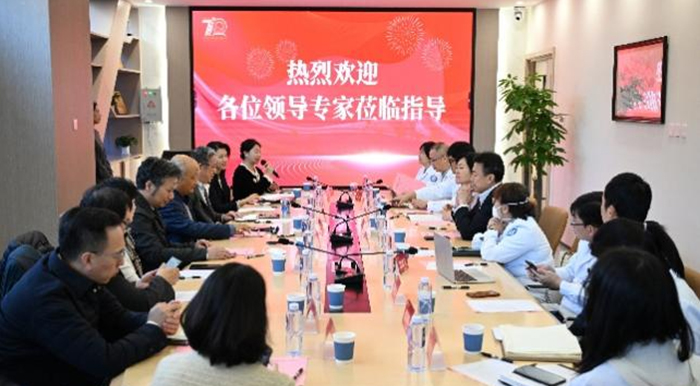
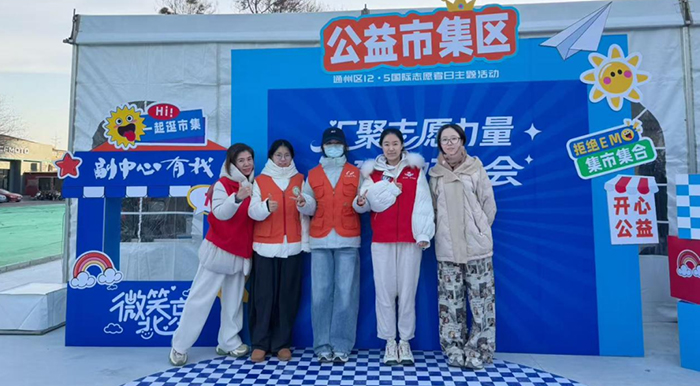


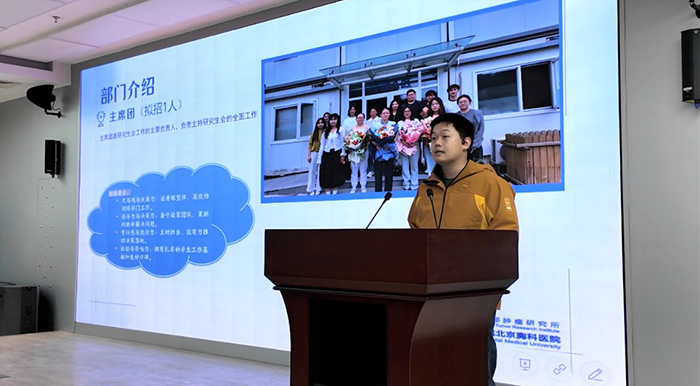
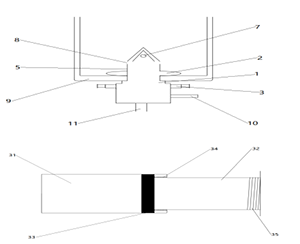

.jpg)










